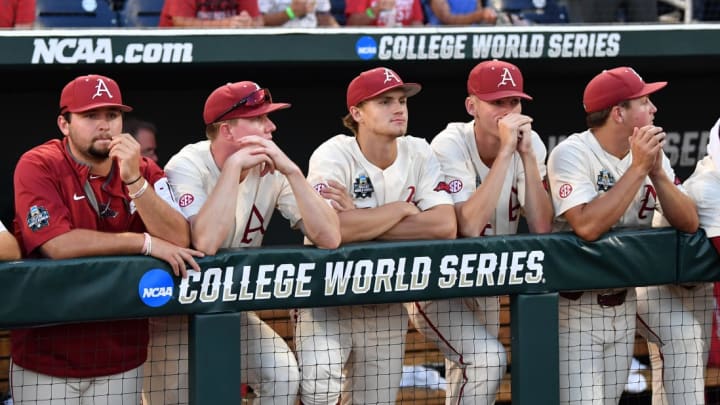Beginning Monday, LSU and Texas will square off in the best-of-three championship series at the 63rd College World Series. Here are the answers to eight questions related to the two-week event held at Johnny Rosenblatt Stadium in Omaha, Nebraska.
When was the first College World Series?
California defeated Yale in the first College World Series, which was played at Hyames Field in Kalamazoo, Michigan, in 1947. The CWS returned to Kalamazoo in 1948, moved to Wichita, Kansas, in 1949, and has been played in Omaha since 1950. Omaha Municipal Stadium was renamed Rosenblatt Stadium in 1964 to honor mayor Johnny Rosenblatt's role in bringing baseball to the city, where more than 6 million fans have walked through the turnstiles at the CWS since 1950. While there was some speculation that the CWS might be on the move again in the near future, those concerns were put to rest last year when the local organizing committee for the event signed a contract to keep the World Series in Omaha through 2035.



Why do so many players stand outside of the dugout?
Watch any CWS game and you're unlikely to see many players sitting in the Rosenblatt Stadium dugouts. Instead, teams generally stand as close to the field as they are allowed, providing the ideal location to see and be seen. There's generally as much action on the top step of each dugout as there is on the field, with players engaging in team-specific dugout rituals (see the video below) and chatter. One of the most common rituals involves "deuces," the term used to describe the situation when there are two balls, two strikes, and two outs in an inning. It's also common for players to don rally caps when trailing late in a game, and teams aren't above bringing good luck charms to Omaha. LSU, for instance, kept a miniature toilet coin bank in its dugout in 1997 and 1998. The idea was that a player who had a bad at-bat or made an error in the field could flush away the memory when he returned to the dugout.
What was Gorilla Ball?
Gorilla Ball was the term used by LSU manager Skip Bertman and popularized by the CWS media to describe the power-hitting approach that led the Tigers to four championships in the 1990s. Gorilla Ball reached its peak in the 1998 championship game (the best-of-three championship series wasn't added until 2003) when Southern California staved off Arizona State in a 21-14 slugfest. The game lasted four hours and included nine home runs by eight players, 39 hits, and 10 pitchers. Jim Wright of the NCAA had the unenviable task of compiling a list of all of the records that were set that day. "It'll be at least an hour, and I may not have all of them then," he told the media after the game. Aluminum bats were introduced to college baseball in 1974 and by the height of Gorilla Ball bat technology was making a mockery of the minimal restrictions placed on bat size and weight, as well as the game. New bat restrictions followed for the 1999 season and offensive production has since declined to less absurd levels.

What school has won the most titles?
Southern California has won a record 12 titles in 21 appearances. All but one of the Trojans' titles—including five straight from 1970-74—came under the leadership of legendary manager Rod Dedeaux. Texas has made a CWS record 33 appearances and boasts six titles, while Arizona State and LSU have won five titles apiece.



